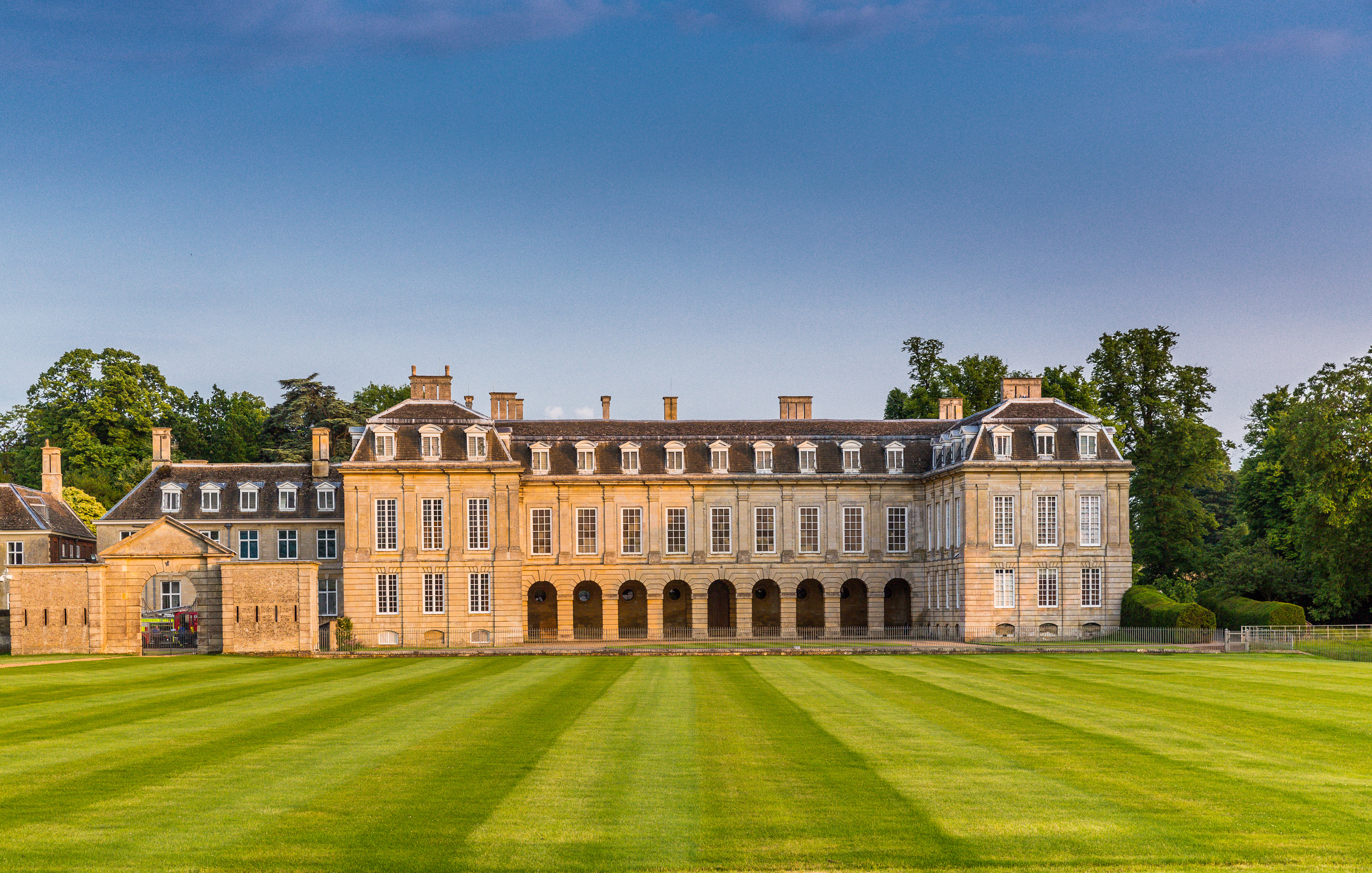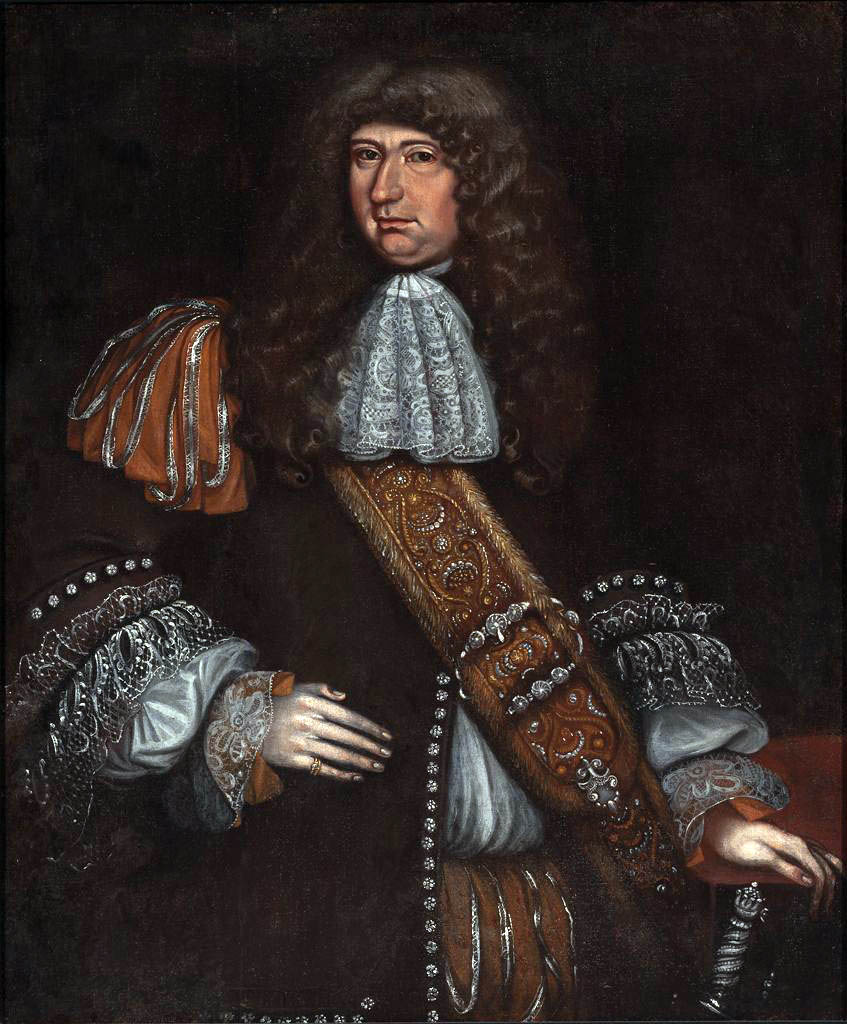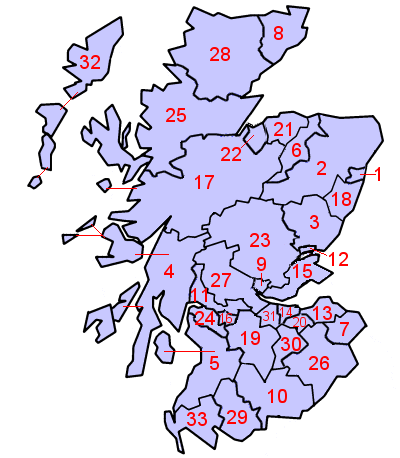|
Lord Lieutenant Of Roxburgh, Ettrick And Lauderdale
This is a list of people who have served as Lord Lieutenant of Roxburgh, Ettrick and Lauderdale. This office replaced the Lord Lieutenant of Roxburghshire and the Lord Lieutenant of Selkirkshire in 1975. *''Buccleuch had been Lord Lieutenant of Roxburghshire and Selkirkshire'' * John Scott, 9th Duke of Buccleuch, 1975–1998 * June Paterson-Brown, 7 December 1998 – 2007 * Gerald Maitland-Carew, 28 March 2007 – 28 December 2016 * Richard Scott, 10th Duke of Buccleuch, 28 December 2016 – present References * External linksRoxburgh, Ettrick & Lauderdale Lieutenancy {{Lord Lieutenancies Roxburgh, Ettrick and Lauderdale Roxburgh, Ettrick and Lauderdale (''Rosbrog, Eadaraig agus Srath Labhdair'' in Scottish Gaelic) is a lieutenancy area of Scotland. The lieutenancy area was created on 1 April 1996, when local government was reorganised across Scotland under the ... Ettrick and Lauderdale Roxburgh ... [...More Info...] [...Related Items...] OR: [Wikipedia] [Google] [Baidu] |
Lord Lieutenant
A lord-lieutenant ( ) is the British monarch's personal representative in each lieutenancy area of the United Kingdom. Historically, each lieutenant was responsible for organising the county's militia. In 1871, the lieutenant's responsibility over the local militia was removed. However, it was not until 1921 that they formally lost the right to call upon able-bodied men to fight when needed. Lord-lieutenant is now an honorary titular position usually awarded to a retired notable person in the county. Origins England and Wales Lieutenants were first appointed to a number of English counties by King Henry VIII in the 1540s, when the military functions of the sheriffs were handed over to them. Each lieutenant raised and was responsible for the efficiency of the local militia units of his county, and afterwards of the yeomanry and volunteers. He was commander of these forces, whose officers he appointed. These commissions were originally of temporary duration, and only when the ... [...More Info...] [...Related Items...] OR: [Wikipedia] [Google] [Baidu] |
Roxburgh, Ettrick And Lauderdale
Roxburgh, Ettrick and Lauderdale (''Rosbrog, Eadaraig agus Srath Labhdair'' in Scottish Gaelic) is a lieutenancy area of Scotland. The lieutenancy area was created on 1 April 1996, when local government was reorganised across Scotland under the Local Government etc. (Scotland) Act 1994. The lieutenancy area covers the combined area of the two abolished local government districts of Roxburgh and Ettrick and Lauderdale, which had been nominally separate lieutenancy areas prior to 1996, although both lieutenancies were held by John Scott, 9th Duke of Buccleuch. The lieutenancy area broadly corresponds to the historic counties of Roxburghshire and Selkirkshire, plus small parts of Midlothian and Berwickshire. See also Lord Lieutenant of Roxburgh, Ettrick and Lauderdale This is a list of people who have served as Lord Lieutenant of Roxburgh, Ettrick and Lauderdale. This office replaced the Lord Lieutenant of Roxburghshire and the Lord Lieutenant of Selkirkshire in 1975. *''Buccleu ... [...More Info...] [...Related Items...] OR: [Wikipedia] [Google] [Baidu] |
Lord Lieutenant Of Roxburghshire
This is a list of people who have served as Lord Lieutenant of Roxburghshire. The office was replaced by the Lord Lieutenant of Roxburgh, Ettrick and Lauderdale in 1975. *John Ker, 3rd Duke of Roxburghe 17 March 1794 – 19 March 1804 *Henry Scott, 3rd Duke of Buccleuch 28 May 1804 – 11 January 1812 *William Kerr, 6th Marquess of Lothian 25 January 1812 – 27 April 1824 *John Kerr, 7th Marquess of Lothian 2 June 1824 – 14 November 1841 *Walter Montagu Douglas Scott, 5th Duke of Buccleuch 30 November 1841 – 16 April 1884 *James Innes-Ker, 7th Duke of Roxburghe 17 May 1884 – 23 October 1892 *Donald Mackay, 11th Lord Reay 14 November 1892 – 1918 *Henry Innes-Ker, 8th Duke of Roxburghe 25 January 1918 – 29 September 1932 *Walter Montagu Douglas Scott, 8th Duke of Buccleuch 3 November 1932 – 4 October 1973 *John Scott, 9th Duke of Buccleuch 10 June 1974 – 1975 *''Buccleuch became Lord Lieutenant of Roxburgh, Ettrick and Lauderdale ... [...More Info...] [...Related Items...] OR: [Wikipedia] [Google] [Baidu] |
Lord Lieutenant Of Selkirkshire
This is a list of people, who have served as Lord Lieutenant of Selkirkshire. The office was replaced by the Lord Lieutenant of Roxburgh, Ettrick and Lauderdale in 1975. * Charles Montagu-Scott, Earl of Dalkeith 17 March 1794 – 1797 * Francis Napier, 8th Lord Napier 17 November 1797 – 1 August 1823 * Henry Montagu-Scott, 2nd Baron Montagu of Boughton 25 August 1823 – 30 October 1845 * Henry Hepburne-Scott, 7th Lord Polwarth 5 December 1845 – 16 August 1867 * Alan Eliott-Lockhart 15 November 1867 – 15 March 1878 * Walter Hepburne-Scott, 8th Lord Polwarth 2 May 1878 – 1920 * Maj. Charles Henry Scott Plummer 6 June 1920 – 26 June 1948 * Sir Samuel Strang Steel, 1st Baronet 13 September 1948 – 1958 * V-Adm. Sir Edward Michael Conolly Abel Smith 15 February 1958 – 1975 * Walter Montagu-Douglas-Scott, 9th Duke of Buccleuch 16 March 1975 – 1975''London Gazette'', Issue 46530, published 27 March 1975 *''Buccleuch became Lord Li ... [...More Info...] [...Related Items...] OR: [Wikipedia] [Google] [Baidu] |
John Scott, 9th Duke Of Buccleuch
Walter Francis John Montagu Douglas Scott, 9th Duke of Buccleuch and 11th Duke of Queensberry, (28 September 1923 – 4 September 2007) was a Scottish peer, politician and landowner. He served in the Royal Naval Volunteer Reserve in the Second World War, and represented Edinburgh North in the House of Commons for 13 years. He owned the largest private landed estate in the United Kingdom, covering some . The estate includes Drumlanrig Castle in Dumfries and Galloway, Bowhill House in Selkirkshire, and Boughton House in Northamptonshire. A fourth house, Dalkeith Palace, near Edinburgh, was most recently let to the West Central Wisconsin Consortium, which used the palace as a base for its study abroad program, until 2021. Early life Walter Francis John Montagu Douglas Scott was best known by his middle name John, and he was the only son of Walter Montagu Douglas Scott, 8th Duke of Buccleuch and 10th Duke of Queensberry, and the former Mary Lascelles. His sister Lady Elizabeth ... [...More Info...] [...Related Items...] OR: [Wikipedia] [Google] [Baidu] |
June Paterson-Brown
June Paterson-Brown, née Garden (8 February 1932 – 6 December 2009) was a Scottish medical doctor, early family planning advocate, Chief Commissioner of the Girl Guides Association, and the first female Lord Lieutenant in Scotland. Early life and education June Garden was born on 8 February 1932 in Edinburgh, Scotland. She was the daughter of Jean Mallace and Thomas Garden. Wing Commander CA. She graduated from the University of Edinburgh Medical School in 1955. Career Medical doctor After graduation, she became employed at the Royal Infirmary of Edinburgh, where she worked as a junior houseman. In 1956, she transferred to East Fortune Hospital where patients were treated for tuberculosis. In 1957, she married Peter Neville Paterson-Brown, a general practitioner, and moved to Hawick in the Scottish Borders. Paterson-Brown became increasingly involved in family planning advocacy beginning in 1960 when she started to give talks at family planning clinics. Because family p ... [...More Info...] [...Related Items...] OR: [Wikipedia] [Google] [Baidu] |
Gerald Maitland-Carew
Captain Gerald Edward Ian Maitland-Carew CVO (born 28 December 1941) is a former Lord Lieutenant of Roxburgh, Ettrick and Lauderdale in Scotland. He served from March 2007 until December 2016, prior to which he was Deputy Lieutenant, from 1989 to 2007. Maitland-Carew was born into an Anglo-Irish aristocratic family, being the second son of The 6th Baron Carew by his Scottish spouse, Lady Sylvia Gwendoline Maitland, daughter of The 15th Earl of Lauderdale. His father, Lord Carew, was the owner of Castletown House in Celbridge, County Kildare, which is possibly the largest country house still standing (and not a ruin) anywhere in Ireland. As the Maitland's male entail had been broken, he inherited Thirlestane Castle through his mother, in 1971, when he also assumed the new surname of Maitland-Carew by Deed Poll. He is now trustee of both the Thirlestane Castle and Mellerstain House Charitable Trusts. Educated at Harrow School, he served in the 15th/19th The King's Royal Hussars ... [...More Info...] [...Related Items...] OR: [Wikipedia] [Google] [Baidu] |
Richard Scott, 10th Duke Of Buccleuch
Richard Walter John Montagu Douglas Scott, 10th Duke of Buccleuch and 12th Duke of Queensberry, (born 14 February 1954), styled as Lord Eskdaill until 1973 and as Earl of Dalkeith from 1973 until 2007, is a Scottish landholder and peer. He is the Duke of Buccleuch and Queensberry, as well as Chief of Clan Scott. He is the heir male of James, Duke of Monmouth (9 April 1649 – 15 July 1685), the eldest illegitimate son of Charles II and his mistress, Lucy Walter, and more remotely in a direct male line from Alan of Dol, who came to Britain in 1066 with William the Conqueror. Scott was once Scotland's largest private landowner, owning of Scottish land, but was surpassed by Anders Holch Povlsen who currently holds in the country. Early life and education Scott was born in 1954, the son of John Scott, 9th Duke of Buccleuch, and his wife, Jane Scott, Duchess of Buccleuch, a daughter of John McNeill, QC. He was baptised with Princess Margaret as one of his godparents. He ... [...More Info...] [...Related Items...] OR: [Wikipedia] [Google] [Baidu] |
10 Downing Street
10 Downing Street in London, also known colloquially in the United Kingdom as Number 10, is the official residence and executive office of the first lord of the treasury, usually, by convention, the prime minister of the United Kingdom. Along with the adjoining Cabinet Office at 70 Whitehall, it is the headquarters of the Government of the United Kingdom. Situated in Downing Street in the City of Westminster, London, Number 10 is over 300 years old and contains approximately 100 rooms. A private residence for the prime minister's use occupies the third floor and there is a kitchen in the basement. The other floors contain offices and conference, reception, sitting and dining rooms where the prime minister works, and where government ministers, national leaders and foreign dignitaries are met and hosted. At the rear is an interior courtyard and a terrace overlooking a garden. Adjacent to St James's Park, Number 10 is approximately from Buckingham Palace, the London residence ... [...More Info...] [...Related Items...] OR: [Wikipedia] [Google] [Baidu] |
Order Of Precedence In Scotland
The order of precedence in Scotland was fixed by Royal Warrant in 1905. Amendments were made by further Warrants in 1912, 1952, 1958, 1999 to coincide with the establishment of the Scottish Parliament and Scottish Government and most recently in 2012. The relative precedence of peers of Scotland is determined by the Act of Union 1707. Gentlemen Royalty, high officials, et al. Royal family *The King *The Lord High Commissioner to the General Assembly of the Church of Scotland (Lord Hodge) *The Duke of Rothesay *The Earl of Dumbarton *Prince George of Wales *Prince Louis of Wales *Archie Mountbatten-Windsor *The Earl of Inverness *The Earl of Forfar *The Earl of Snowdon *The Lord Culloden *The Earl of St Andrews *Prince Michael of Kent High Officers of State, et al. Nobility, et al. Dukes, et al. Marquesses, et al. Earls, et al. Judiciary, et al. #Lord Justice General (Lord Carloway) #Lord Clerk Register ( The Lord Mackay of Clashfern) #Lord Advocate (''Office held by ... [...More Info...] [...Related Items...] OR: [Wikipedia] [Google] [Baidu] |
Lord Lieutenancies Of Scotland
The lieutenancy areas of Scotland are the areas used for the ceremonial lord-lieutenants, the monarch's representatives, in Scotland. The lord-lieutenants' titles chosen by the monarch and his legal advisers are mainly based on placenames of the traditional counties of Scotland. In 1794 permanent lieutenancies were established by Royal Warrant. By the Militia Act 1797 (37 Geo.3, C.103), the lieutenants appointed "for the Counties, Stewartries, Cities, and Places" were given powers to raise and command County Militia Units. While in their lieutenancies, lord lieutenants are among the few individuals in Scotland officially permitted to fly a banner of the Royal Arms of Scotland, the "Lion Rampant" as it is more commonly known. Lieutenancy areas are different from the current local government council areas and their committee areas. They also differ from other subdivisions of Scotland including sheriffdoms and former regions and districts. The Lord Provosts of Aberdeen, Dundee ... [...More Info...] [...Related Items...] OR: [Wikipedia] [Google] [Baidu] |



